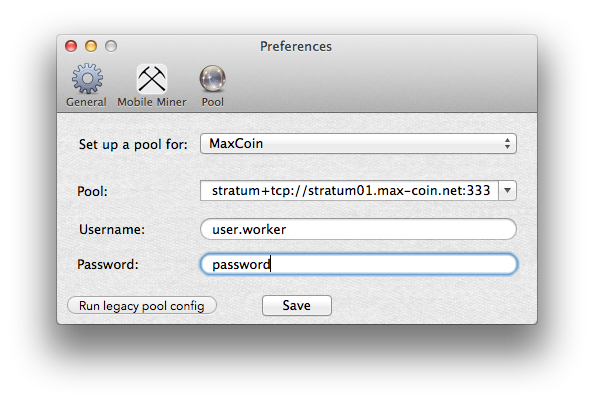

#Macminer macsierra mac
Once you release the keys, the PRAM/NVRAM will be reset.Īs for Macs with SMC, this process will vary depending on whether your Mac is a desktop or laptop and whether it has a removable battery. Hold them until you hear the startup sound and see the Apple logo.ģ. Once you see the startup routine and sound, press and hold the Command + Option + P + R keys. At this point, you can power on your Mac again.Ģ. You should wait until the screen goes dark and all fans stop spinning. Our latest fully-supported operating system if macOS. Click the little cog button on each miner to set it up: 4. Some Unigine Heaven benchmarks (Opel GL 3.2, OS X Mountain Lion) Mac Mini 2012 iGPU Intel HD 4000: Setting Basic (1280720, x2 AA): 11.7 fps, Score 294 Setting Extreme (1600900, x8 AA): 3.3 fps, Score 84 Mac Mini 2012 eGPU GTX 770. Sierra was replaced by High Sierra 10.13, Mojave 10.14, and the newest Catalina 10.15. Choose one or more mining windows from the View Menu: 3. The Mac Mini is on the table, the eGPU under the table, i am using a 2m Thunderbolt cable.

In keeping with Apples release cycle, macOS 10.12 Sierra will no longer be receiving security updates.
#Macminer macsierra manual
Press and hold the power button on your Mac to completely shut it off. Apple has announced the launch of its new operating system, macOS 10.15 Catalina on October 7, 2019. MacMiner is the first native Mac, Objective-C GUI app for the most efficient mining software, bfgminer, cgminer, and cpuminer (minerd) are all included, with user-friendly setup from auto configuration to full manual editing of config files, as well as an API Output table view for all the detailed statistics on your FPGA and ASIC miners. There are five steps here, and they’re straightforward to carry out:ġ. The equivalent is to turn the machine off, wait 30 seconds, then boot back up.įor Intel machines, there are a couple of steps you can take. However, you won’t be able to do this for Apple Silicon machines, as they don’t have an SMC. These are the areas of your Mac that control basic operations that are critical for basic system functions. If your Wi-Fi still keeps disconnecting or dropping after you try the first two steps, look to reset the Parameter Random Access Memory (PRAM) / Non-Volatile Random Access Memory (NVRAM) and the System Management Controller (SMC).
#Macminer macsierra how to
This is similar to how a plugged-in Ethernet cable can disable your Wi-Fi connection.Īlso read: How to Connect Your iDevice to Your Mac’s Internet Connection Without a Wifi Router 3. Devices such as USB hubs can also disable the Wi-Fi port. There’s a simple reason why this could be a solution: some USB devices emit a wireless signal that can interfere with your connection. You could get things back up and running by disconnecting any USB3 and USB-C devices on a temporary basis.Īs such, the first thing to try is disconnecting your USB devices one by one to see if the Wi-Fi comes back. Disconnect Your USB and Wireless Signal Devices If your Mac connects to the Wi-Fi after it restarts, it could be a temporary glitch. Before getting into more complex solutions, try restarting your Mac to see if this resolves the problems with your Wi-Fi dropping.


 0 kommentar(er)
0 kommentar(er)
